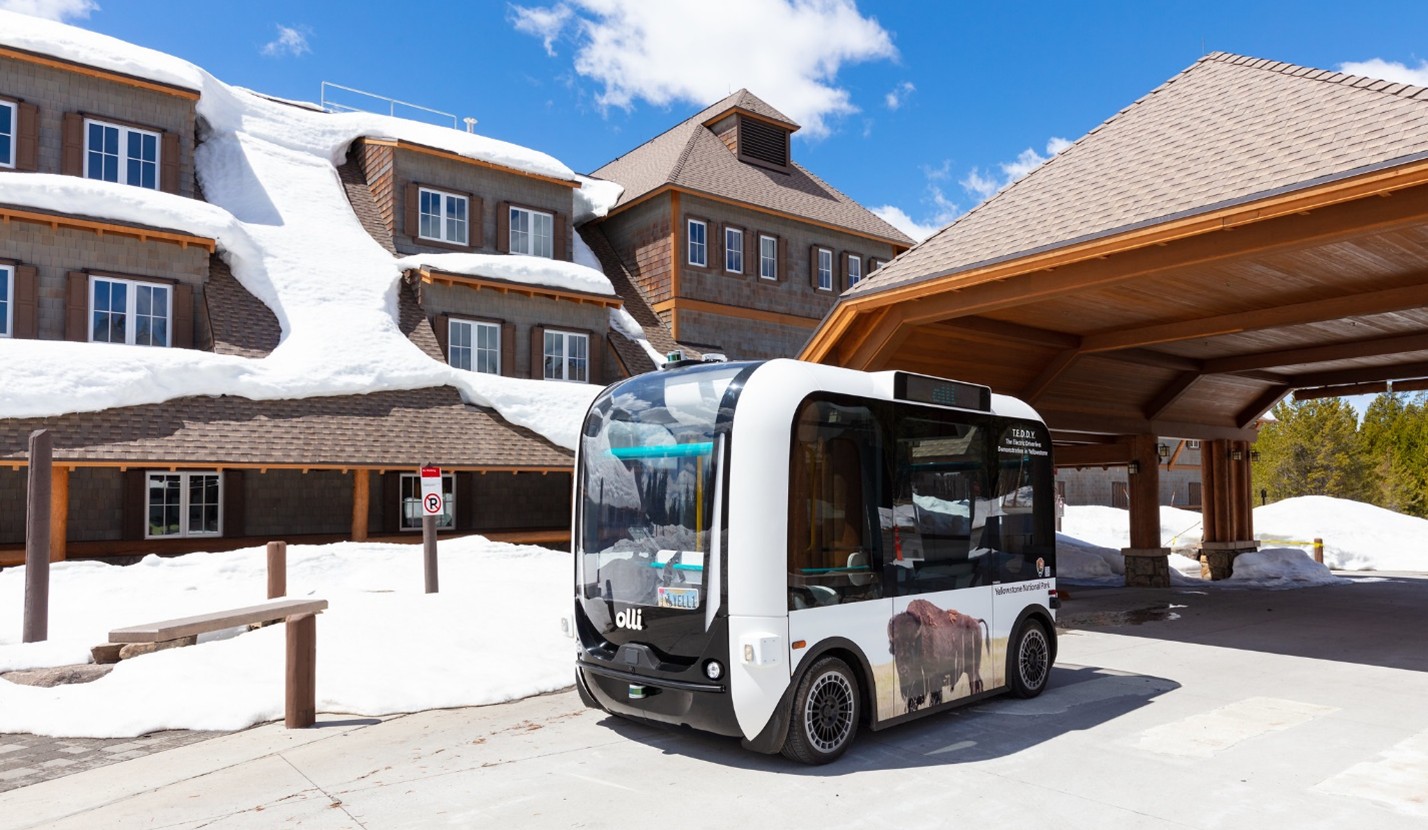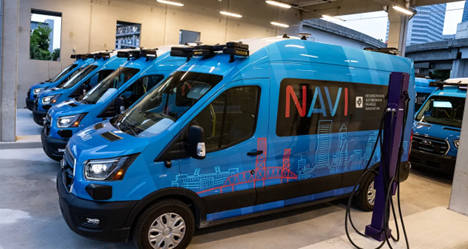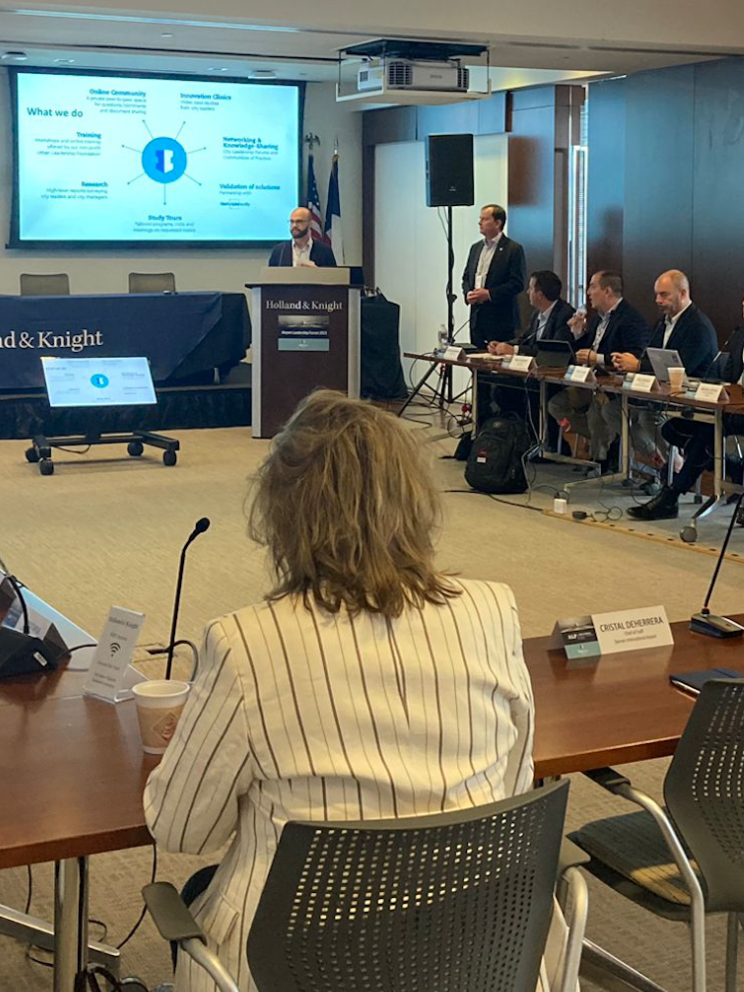
Photo: Beep
Autonomous mobility for all
15 July 2025
How Beep is doing autonomous differently
From the water cooler to the board room to the halls of government, the promise of shared autonomous vehicles (AVs) has been a hot discussion topic for years now. With the industry’s rapid technological advancement, the industry has graduated from temporary demonstrations to permanent integration within transportation networks. This opens the door to meaningful shared mobility innovation–not in some distant future, but now. Key factors–public support, market demand, operational expertise, and the reliability and safety of the technology itself–are converging to transform the way people move.
Beep, Inc., a leading deployer of shared autonomous mobility solutions, has been testing and deploying shared AVs in diverse real-world environments for more than six years, including airports, college campuses, transit systems, medical facilities, business parks, mixed-used developments, town centres, private communities, and even Yellowstone National Park. The company has accumulated more than 200,000 live road hours and 168,000 passengers across multiple vehicle platforms in nine different states.
The wealth of performance data, operational insight, and best practices generated through this experience enables Beep to safely scale autonomous mobility networks across a wide variety of use cases, and has underscored the need for remote supervision as an essential element of any autonomous fleet deployment. But while autonomy has always yielded promise for freight, personal travel, and ride hail applications, what about public sector passenger services that require compatibility with data standards, integration within a complex multimodal network, accessibility features, and a variety of other requirements unique to the provision of safe, reliable, public mobility?
That’s where Beep’s proprietary software technology, AutonomOSTM, will play a role in the future of AVs. Beep’s AI-powered, vehicle-agnostic software solution is built to meet the needs of public transportation operators by providing a unified view of service performance, fleet health, and on-road operations, AutonomOSTM provides a comprehensive services capability for the design, deployment, and management of shared AV services either as a standalone solution or with integration into multimodal operations.

A new solution to familiar challenges
Shared AVs have the potential to transform the way we move people around and between our communities by addressing the major transportation issues that negatively impact our economy, health, and quality of life.
Studies on the benefits of autonomous mobility have produced a number of compelling findings:
- Accessibility: 4 million jobs unlocked for people with disabilities;
- Public health: 40 percent decrease in air pollution; and
- Congestion relief: 61 percent decrease in noise-polluting vehicle trips.
We also know that when transit options are absent or underutilised, congestion increases. One study reported that that average highway delays increased by 47 percent when transit service was unavailable. Each shared AV route is capable of eliminating private car trips by up to an 8:1 ratio, making for safer, quieter roads and even reducing the space and capital requirements needed for dense parking structures. So how do we encourage more people to choose shared mobility? We have to make the choice easy by offering a less stressful, more convenient, and more connected alternative to personal automobile use.
America’s first fully autonomous public transportation network

The first fully autonomous public transportation network in the United States launched on 30 June, 2025. As part of a groundbreaking three-phase project led by the Jacksonville Transportation Authority (JTA) in Northeast Florida, the Neighborhood Autonomous Vehicle Innovation (NAVI) will service the first phase of the Ultimate Urban Circulator (U2C) project. NAVI services a 5.6-kilometre route connecting key parts of Downtown Jacksonville, from the Central Business Core to the Sports & Entertainment District, integrating autonomous vehicles into the overall transportation network. In this first phase of the JTA’s U2C programme, Beep will operate and maintain a customised fleet of 14 electric, autonomous, Buy America- and ADA-compliant Ford E-Transit vehicles integrated with Oxa’s automated driving system (ADS). Beep’s proprietary technology will facilitate both vehicle deployment and command centre operations from the JTA’s new state-of-the-art Autonomous Innovation Center (AIC).
The new AIC serves as the command center facility to store, service, monitor, and maintain the JTA’s shared AV fleet, using maintenance bays for vehicle service and covered AV parking for storage and charging. From live monitoring of national operations to simulations that demonstrate the system’s reliability, scalability, and real-time responsiveness, the two-story 1,750-square metre AIC facility showcases what it takes to manage a modern autonomous transit system.
Additionally, Beep has worked with partners, including the JTA and Oxa, to develop a first-of-its-kind accredited autonomous vehicle curriculum at nearby Florida State College of Jacksonville to educate future transportation leaders. The visionary U2C programme has also attracted the State of Florida’s first automotive manufacturer, HOLON, which will produce and deploy the shared AVs for this project and others like it, generating hundreds of jobs and nearly US$300 million in economic impact for the region. According to an analysis conducted by the University of North Florida, the U2C project will create 4,141 jobs and nearly US$294 million in labor income. Some of the largest job categories benefitting include construction trade workers, mechanics, installers, repairs, assemblers, fabricators, and, yes, motor vehicle operators. This lighthouse programme, led by the visionary JTA, will serve as a model for other communities nationwide to learn from and implement.
Reinventing shared mobility
For Beep, shared AV technology is not about replacing existing transit–it’s about extending its reach, increasing its impact, and adding to its inherent value. Transit agencies have been trying to solve the first/last/only mile challenge for decades. The company is convinced that shared AV technology, paired with a robust remote command-and-control software platform, holds the key to solving for this persistent challenge.
Beep is committed to supplementing existing systems, not supplanting them, and working hand-in-hand with the public sector to support, upskill, and build new career ladders for the workforce and modern transportation networks that will yield benefits for generations to come. The future for shared AVs is bright, and continues to come closer into focus with each new deployment.
Brought to you by:
Main image: Yellowstone National Park partnered with Beep to launch the first automated shuttles in a national park setting. Park visitors could ride free of charge during the peak summer months within the Canyon Village campground, visitor services and adjoining visitor lodging area.







